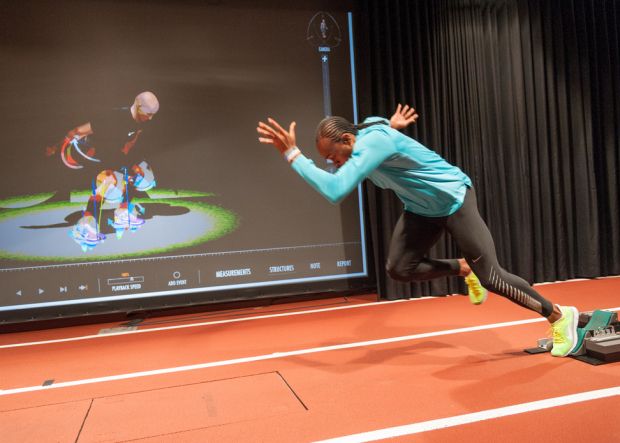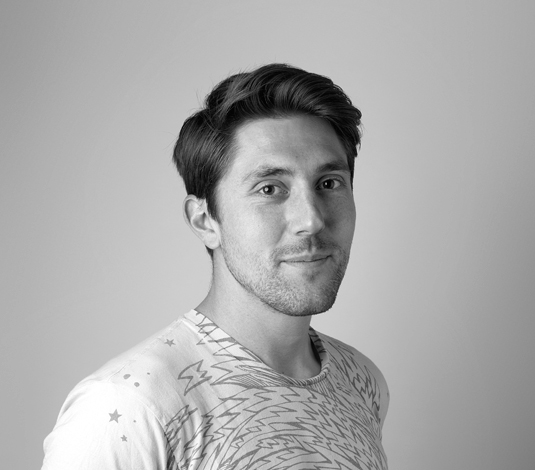Behind the Scenes at Nike HQ
Nike Running's senior design director Rob Dolan reveals how to shoes giants go from the drawing board to your feet

How long is the design process?
Between 18-21 months depending on the project. It starts with a brief, meeting with athletes and getting insights and feedback from them to learn what we can do better. This legwork, combined with market research and looking at how the shoes are performing at retail shape the process. Once we have a brief, we start sketching and try to come up with innovations that can solve the problems feedback has made us aware of. We pick the best solutions and test them with elite athletes and everyday people. We have multiple rounds of samples and after every round we make adjustments. Right now we’re working on shoes that will be out in 2016, which means we’re already thinking about the Rio Olympics and everything in between.
How much does the research and design (R&D) process differ between sports?
No matter if it’s running or skateboarding we listen to athletes to find out what their needs are and what they’re looking for. Based on that we have different areas we innovate in. For example, our skate shoes are all about durability and board feel and not as much about an extreme need for cushioning.
One commonality is that everyone wants a great fit. There are many similarities across different sports and sport specific differences, but the approach is the same. Of course a designer does gain an expertise after spending time on shoes for a specific sport but the overall knowledge still applies. Our designers use and experience products so they understand how they feel and perform.

3D foot scanners are used to generate data and insights about athletes' feet.
When an athlete such as Mo Farah comes to Nike HQ what exactly do you do with him?
We’re lucky because Mo trains here most of the year, so he’s running on our fields and trails everyday and we have regular access to him. Before we even started designing we met with Mo. He is one of the best athletes in world and we included him from the very beginning of the design of the Pegasus 31, it’s one of his favourite go-to shoes so his feedback is very helpful. It’s because of Mo’s ideas and suggestions that we managed to make the Pegasus 31 the fastest, and most efficient shoe we’ve made yet.
How much of the athlete feedback is biomechanical and how much is anecdotal?
We try to balance both. We can do testing in lab, on machines and we can proof things out and prove they’re offering the right amount of cushioning. But it’s a balance because with perception a person may feel something that we can’t measure, but it’s still just as important as what the computer readouts say.
To what extent does shoe technology make a difference to performance?
Whether it’s training or on the track, we believe that the innovations we bring our athletes are helping them perform at a higher level. Whether it’s in training, allowing them to go more miles, do longer runs without injury, providing the right amount of cushioning, or how they perform on the track. For example, with our track spikes, we’re constantly tuning them to have the right amount of stiffness and propulsion and looking at how we can shave weight without sacrificing support and strength. You watch track races and so often it comes down to fractions of a second. Every ounce counts.
Sign up for workout ideas, training advice, reviews of the latest gear and more.

Team USA hurdler Aries Merritt is put through his paces by Nike's high-tech computer anlaysis
With running shoes the idea is to make the athlete go as fast as possible. At what point will we no longer be able to shave any more time off records?
At Nike we believe there is no limit to human potential. It’s always amazing that the records keep breaking, athletes get faster and things are changing all the time. We’re continually redefining what we can do. We don’t believe there is any finish line.
Rob Dolan spoke following the launch of the Nike Air Zoom Pegasus 31, one of Nike's most iconic running shoes. The highly responsive, high-mileage speed shoe features Zoom Air cushioning for a fast, quick-off-the-ground feel and response. Available now from nike.com
Max was the head of digital content for Men's Fitness which worked alongside Coach between 2015 and 2019.

